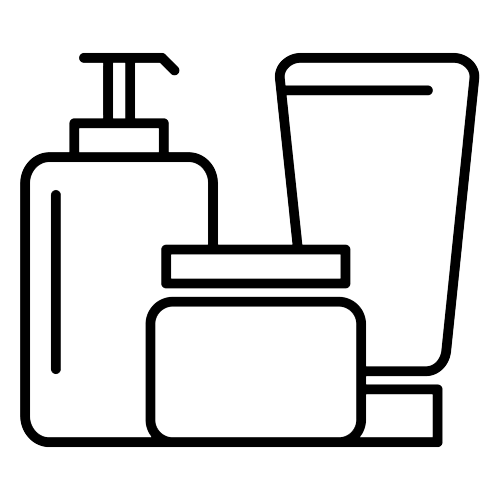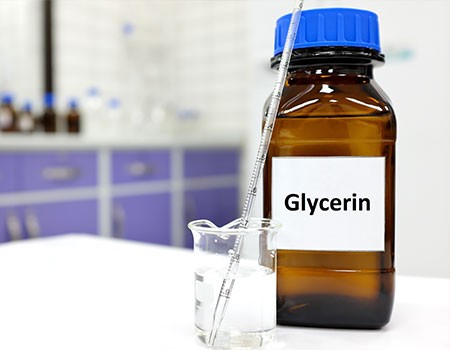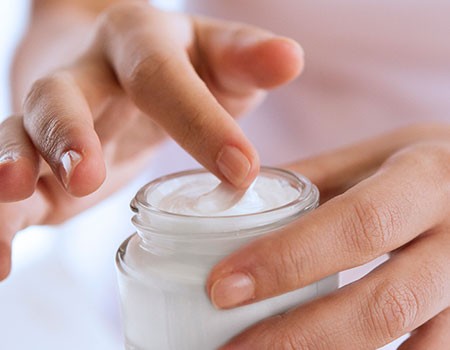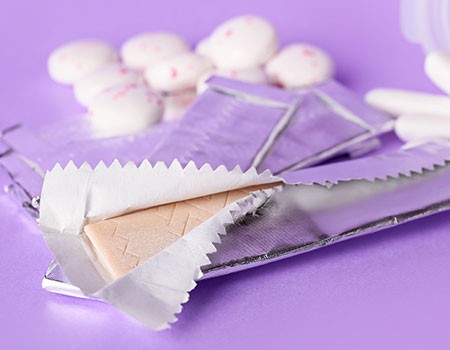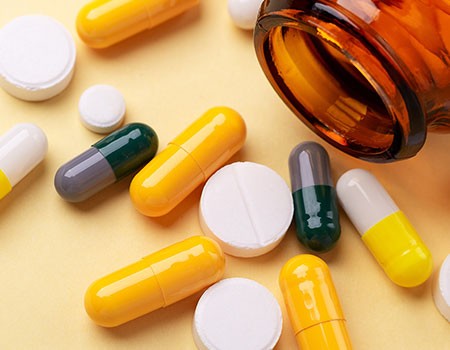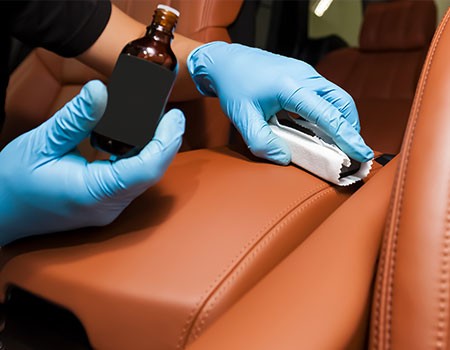Glycerin is a trivalent alcohol that has a wide range of applications. Depending on the production process, glycerin is nowadays either obtained in fat-splitting processes or is a by-product of biofuel production. In principle, the raw material used - a vegetable, animal or synthetic oil - initially plays a subordinate role. However, it does form the basis for the glycerin application: Vegetable Glycerin is used among other things in cosmetics, in food or in Pharmaprodukten.
At chemiekontor.de you have a choice of pharmaceutically certified vegetable glycerin in the quality of at least 99.5 percent in various container sizes. Or in 86.5 percent quality for use in low-viscosity products.
Application areas
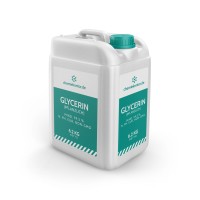



What is glycerin?
The trivalent alcohol glycerol, correctly called glycerol (-ol as the official suffix for alkanes) or propane-1,2,3-triol, has different raw material sources as its basis and today is usually produced from vegetable oils, such as palm oil, soybean oil, rapeseed oil or other oils and mixed fats of various provenance that are available in large quantities
It can also be produced synthetically, with petroleum as its origin. However, this synthesis is hardly ever carried out anymore, as this form of production is very complex and cost-intensive compared to other processes. Depending on the raw material and the production process, different glycerols are produced for different applications. At chemiekontor.de you can obtain vegetable qualities (99.5 % and 86.5 %) in different containers and in the desired quantities.
Today, glycerine is produced to a large extent in the course of the production of sustainable fuels. It is a by-product of the production of these methyl esters and is typically purified in further process steps and processed into high-purity and raffinate glycerin - in each case according to the specifications of the European Pharmacopoeia (Ph. Eur.).
Glycerin: production process
vegetable glycerol is obtained by transesterification and cleavage of triglycerol-rich fats and oils - often from rapeseed as a co-product in biodiesel production. For production, these oils and fats are mixed with lye under pressure. The glycerol splits off from the fatty acids and mixes with water to form a sweet-tasting liquid.
In the downstream process, this intermediate product is distilled several times, filtered and purified in such a way that it can then be used for medical, cosmetic or food technology purposes.
Today, perfected processes produce glycerin of the highest purity, so that it can be consumed safely, provided it complies with the specifications of the European Pharmacopoeia and other directives, and is approved as a food additive (E422). This is also true in other countries, such as the USA, where glycerin is classified as GRAS (Generally Known as Safe) by the FDA. In the UK and the rest of the world, glycerin is also declared as a safe additive and has been in use for over a hundred years.
Glycerin has water-binding properties and is therefore contained in cosmetic products as a moisturizer.
Glycerin, which is syrupy or honey-like at room temperature, is colorless, odorless and hygroscopic. It is characterized by a sweetish taste. Depending on the concentration, its melting point is between -43 and 16.6 °C, and its boiling point is between 110 and 260 °C.
What is glycerin used for?
The substance glycerin is characterized by properties that make it suitable for over 800 areas of application. Glycerin has long been used as a humectant and binder in all kinds of areas. It is also popular in foods, medicines and especially in the cosmetics industry. For a long time, glycerin has been used as a humectant and binder in all kinds of areas. It is used in food and medicines, but is also popular in the animal feed and cosmetics industries. Under the number E422, it is used as a food additive.
In the cosmetics and pharmaceutical industries
A frequent field of application for glycerin is cosmetics. Here, the substance is added to creams as a moisturizer, and glycerin can also be contained in toothpaste. Glycerin has proved particularly useful in the pharmaceutical industry, among other things as an ingredient in laxatives and for treating cerebral edema and problems in cardiological areas.
What are the advantages of glycerin?
What are the properties of glycerin?
1 | Water-binding
Glycerin has water-binding properties, which makes it ideal as a moisturizer in creams or even for some foods.
2 | Harmless to health
The sweet taste of vegetable glycerin makes it a low-calorie sugar substitute in dietary foods.
3 | Wide range of applications
Vegetable glycerin can be mixed with a wide variety of other substances and therefore has a broad range of applications.
Product categories of chemiekontor.de
In the food and beverage industry
Vegetable glycerols are found in foods, but also in luxury foods. As a sweetener and humectant E422, for example, they are used in chewing gum and diet products. Glycerin can also be found as a humectant in stimulants such as tobacco. Since glycerin forms white smoke when heated, it is used in the production of e-liquids for e-cigarettes and as a humectant and flavoring agent for hookah and water pipe tobacco.
In industry and technology
In industry, glycerol is considered a practical auxiliary in antifreeze, lubricants and plasticizers. It is used as a reactant in the production of microchips, dyes or plastics, for example.
In the manufacture of household products
Many household products contain glycerin, for example as a moisturizer in leather care products and shoe creams.
Other applications
Glycerin is also contained in watercolor paints and in feedstuffs for livestock. In recent years, its use as a high-energy supplementary feed in dairy cattle husbandry in particular has contributed to maintaining the health and improving the yield of dairy cows in the high lactation phase. This is because cows consume a lot of energy during this phase. The supply of this additional requirement can often not be ensured by normal feed alone.


